arrowroot noodles, kuzukiri
Arrowroot Noodles: Everything You Need to Know!

Anna Ayvazyan
Posted on June 29, 2023
Share:

You may come across some sweet arrowroot noodles during summer in Japan when you eat traditional Japanese desserts. These noodles are kudzu noodles or kuzukiri. Although it is a dessert, it is also a health food! Kuzukiri is a dessert popular during summer in Japan. Although many enjoy it independently, many cafes will incorporate it with unique desserts. It is a refreshing and healthy dish to help beat the summer heat and humidity.
Where did Japanese arrowroot come from?
Kuzukiri originated as a dessert after a meal, similar to a digestif. These noodles use kudzu starch, or “Japanese arrowroot.” However, there is a slight distinction between kudzu and arrowroot based on the type of root from which the powder is sourced. Kudzu is superior to arrowroot as a thickening agent.
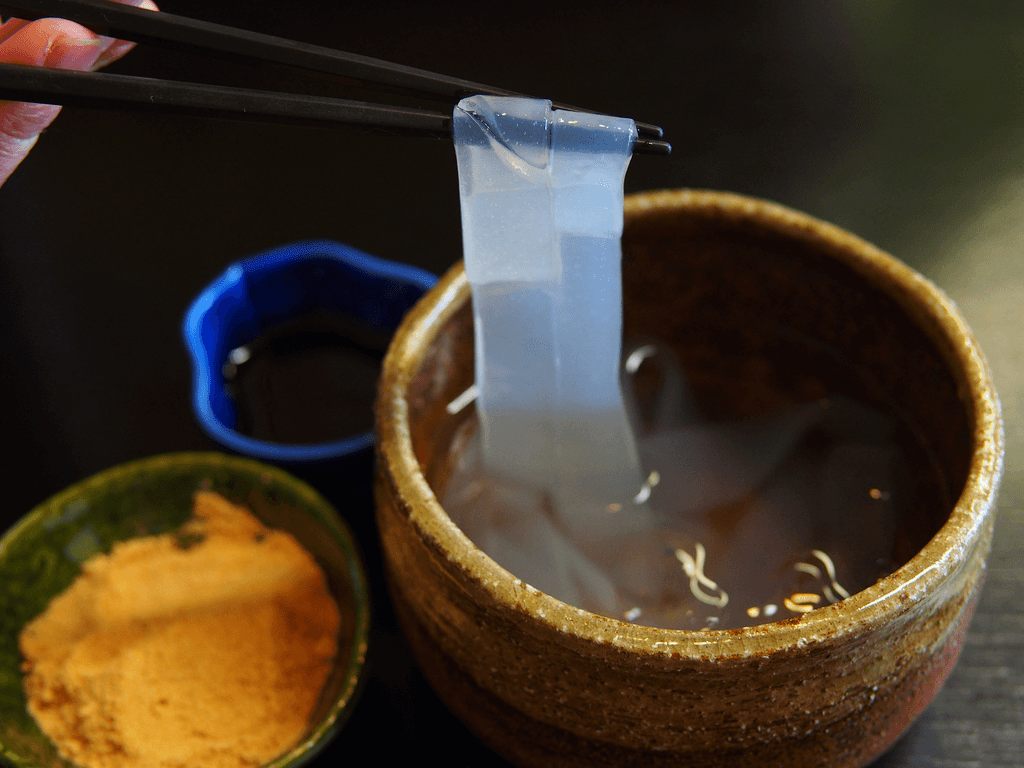
Kudzu is a perennial climbing plant that thrives across Japan, from Hokkaido to Kyushu. From August to September, it blooms with lovely purple flowers. People in Japan have been using kudzu for its digestive benefits for centuries. They have found various uses, such as making Kuzuyu, a tea brewed from kudzu starch, which has gained popularity for its effectiveness in relieving cold symptoms. Moreover, women actively seek out kudzu powder for its believed beauty-enhancing properties.
According to popular belief, people in Kyoto started using kudzu powder in confectionery during the Muromachi period when they consumed dishes like kuzumochi and kuzuchimaki. Additionally, people ate kuzukiri around the same time. Since then, kuzukiri has served as a popular health food and dessert. However, the current shortage of kudzu has led to the frequent substitution of potato starch in making kuzukiri.
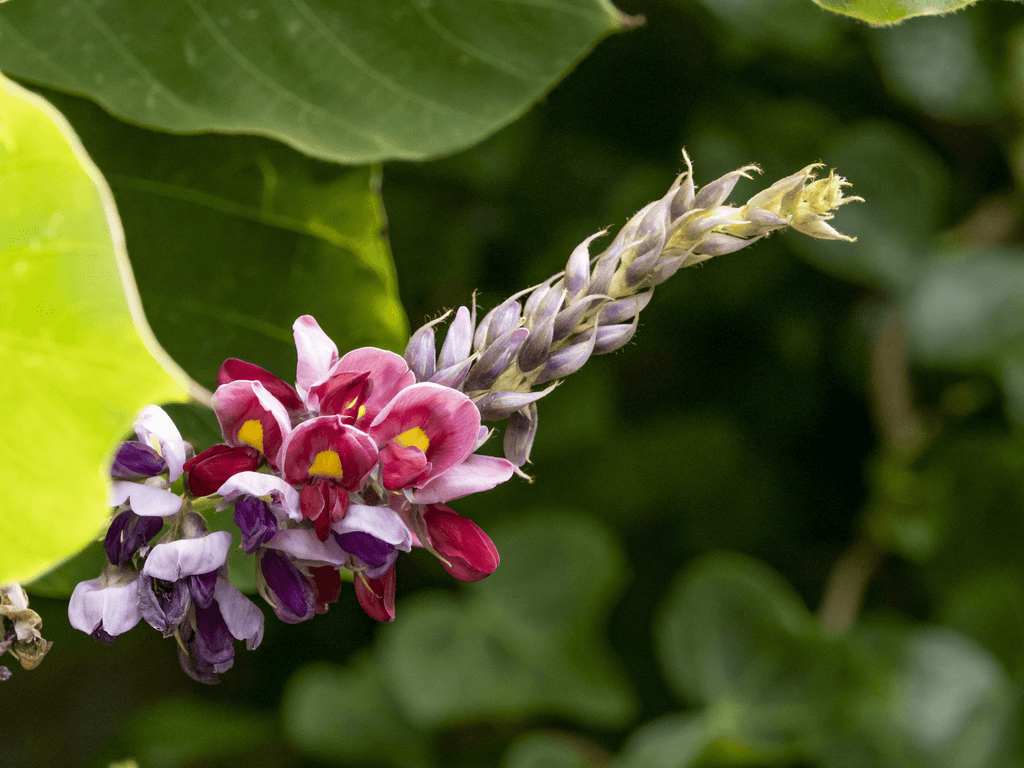
The confusion between kuzukiri and tokoroten is their similar consumption method. However, their production methods differ. Tengusa, a seaweed extract, is processed to create tokoroten, while kuzukiri is produced using a distinct method.
Are you looking to enjoy even more amazing treats this summer? Try Sakuraco! Sakuraco delivers traditional Japanese snacks, sweets, tableware, and more from local Japanese makers right to your door, perfect for a pleasant snack time at home!
How can I serve kuzukiri?
Although it is a simple dish, it can be very time-consuming to make as it is very delicate. To create the translucent noodles, mix the kudzu starch with water and knead it carefully until it forms a smooth, elastic dough. Cut the dough into thin slices, producing delicate and chewy noodles.
By itself, kuzukiri does not taste much, so it often comes with kuromitsu, a black sugar syrup. Occasionally it may be served with kinako or matcha powder on top of it too. Due to its slippery texture, some people call it the “Sashimi of the Mountains.”
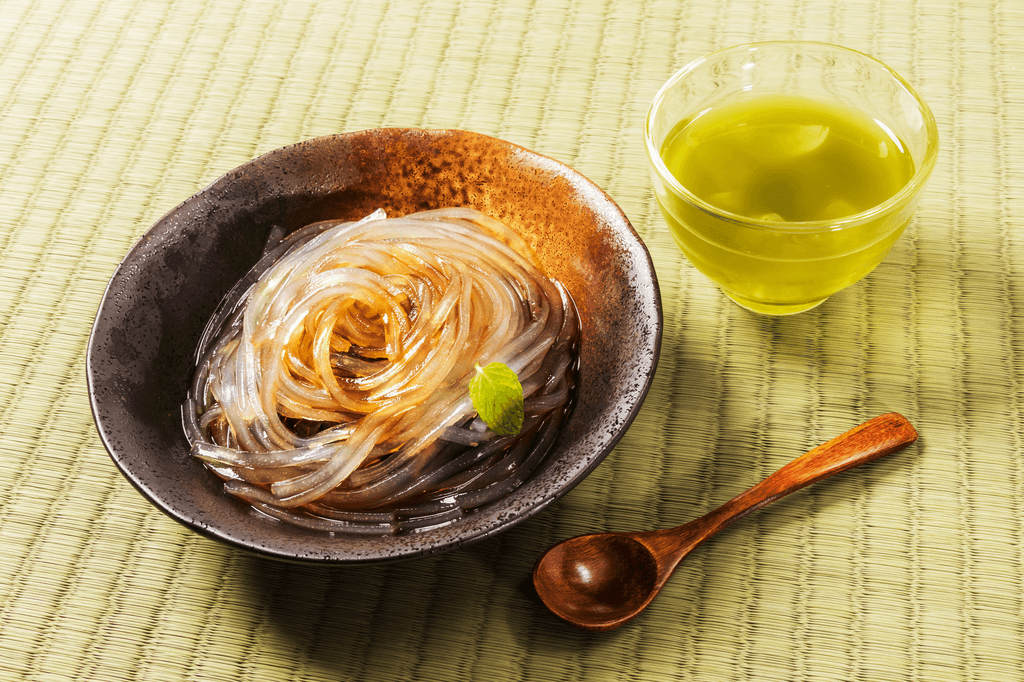
In addition to using kuromitsu, people frequently mix it with other summer desserts such as kakigori (shaved ice), anmitsu, and ice cream dishes. It offers a specific taste and delivers a fun sensory experience! It is also a common accompaniment to summer fruits like peaches and mangos.
While it is commonly associated with summer types of dessert, it’s also present in savory dishes. During winter, nabe (pot) dishes are very popular as winter-time meals. Typically, supermarkets sell nabe sets, including kuzukiri noodles, because they are great at soaking up the dish’s flavor! Kuzuriki is also in salads as a substitute for spaghetti or pasta.
Where can I try Japanese arrowroot noodles?
The best region to try kuzukiri in Japan is Kyoto. Some food historians say kuzukiri has been in Kyoto for over 300 years!
Kagizen Yoshifusa
This shop is one of the longest-running confectionery shops in Kyoto, dating back to the Edo period. At this shop and restaurant, they serve the kuzukiri on ice with kuromitsu. The restaurant is highly rated amongst customers for its Zen atmosphere. It is also great to stop by after exploring the Kodaiji temple!
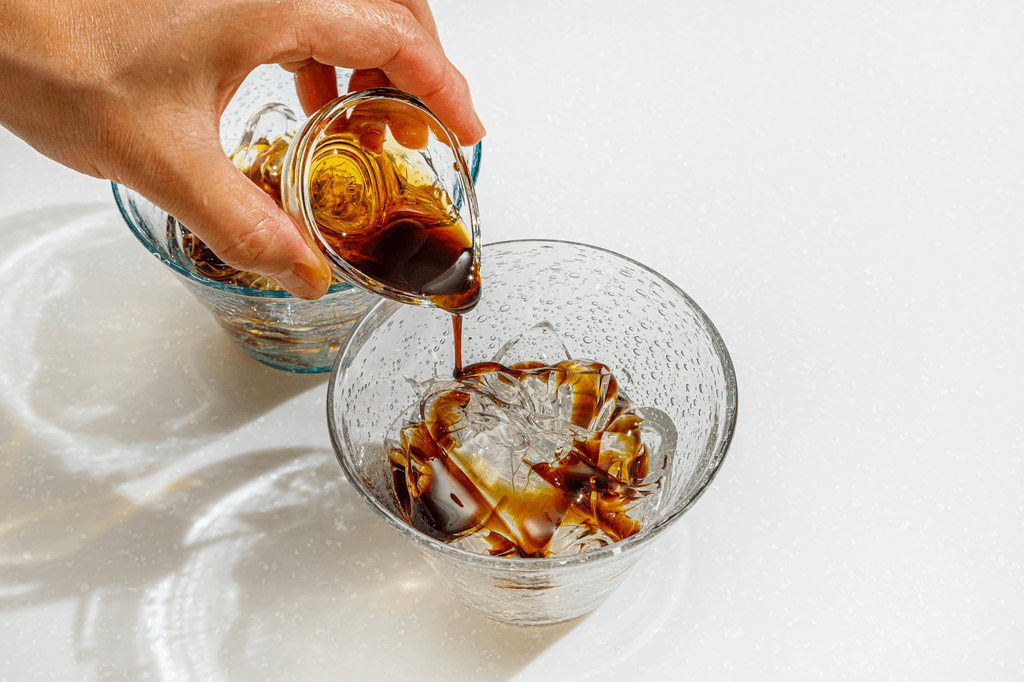
Toraya Karyo – Kyoto Ichijo
This cafe is known for its beautiful Japanese garden, which you can view from the terrace. They serve various dishes, including kuzukiri, during the summer months. It is also located next to the old Imperial Palace.
Kudzuneruya-Tokyo
Kudzuneruya is a hidden gem in east Tokyo, where culinary artistry and tradition blend seamlessly to create an unforgettable dining experience. Located in a charming alleyway, this renowned kuzukiri restaurant transports you to a world of delicate flavors and refined aesthetics.
If you want to eat a healthy dessert, try kuzukiri! Eating during humid months in Japan can be very refreshing, but it can also warm you up during the colder months! Would you like to try kuzukiri? Let us know in the comments below!

Discover authentic flavors with Sakuraco
Get Sakuraco 

Discover authentic flavors with Sakuraco
Get Sakuraco 
Related Articles
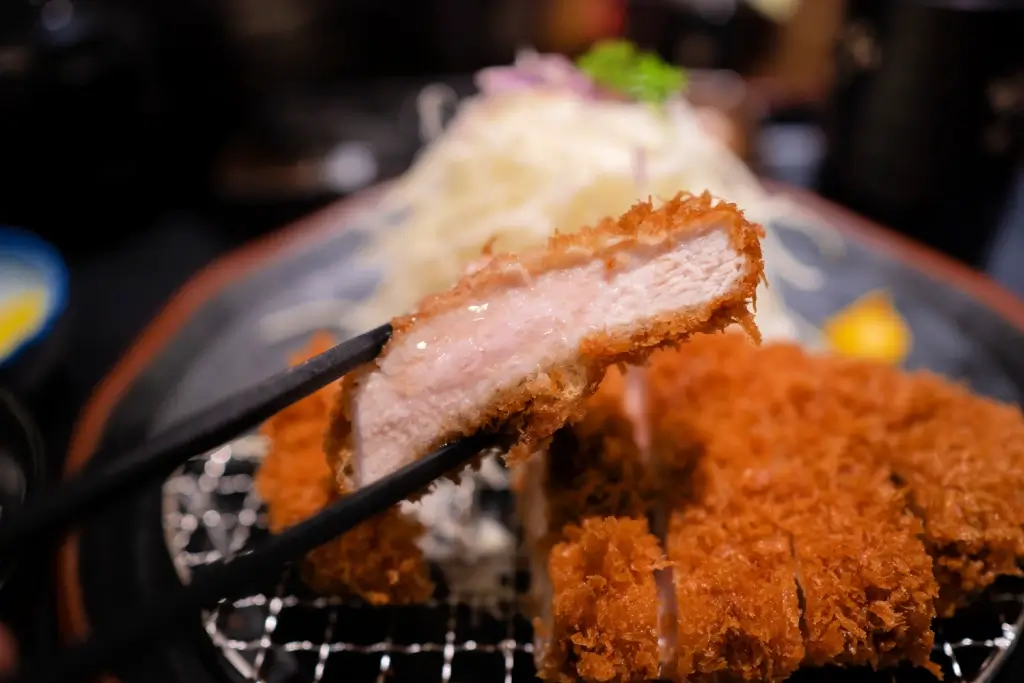
Tonkatsu Luxury Restaurants: Best Ones to Try!
Don’t miss out on tonkatsu if you’re traveling to Japan! Tourists often add the meal to their must-eat list because of its delicious and satisfying nature. Even better, you can elevate the experience by going to luxury restaurants across Japan, where you can experience some of the most celebrated pork cutlets.

Mochi: How is Mochitsuki Made in Japan?
Mochitsuki is the Japanese tradition of pounding steamed rice to make mochi for the New Year. Families and neighbors gather to participate in this lively and meaningful tradition. The teamwork involved helps everyone feel a sense of connection.

Konpeito Candy: What Makes This Starry Treat Shine?
If you are a fan of the famous Demon Slayer series, then you probably know that the favorite treat of the adorable Nezuko Kamado is those tiny, colorful little sweets.

Kinako: The Amazing Roasted Soybean Powder!
Kinako is a very popular ingredient that can easily be found in many traditional Japanese sweets. It has a distinctive flavor, standing alongside other classic tastes such as red bean or sesame. Let’s explore this charming ingredient together, and who knows, you might even be able to make it in your own beloved kitchen!



